This article was co-authored by Kai Ng. Kai Ng is a USATF and RRCA Certified Running Coach at Run Coach Kai. Kai has competed in over 55 races and over 15 marathons, and has trained with 16x USA and World record holder Patti Catalano Dillonso. He specializes in coaching runners of all levels and showing people that everyone can be a runner. Kai is committed to helping his clients reach their goals by showing them how to run with proper form and holding them accountable to train consistently.
There are 11 references cited in this article, which can be found at the bottom of the page.
wikiHow marks an article as reader-approved once it receives enough positive feedback. This article received 26 testimonials and 90% of readers who voted found it helpful, earning it our reader-approved status.
This article has been viewed 557,953 times.
Whether you're a beginner or an experienced runner, you probably want to improve your running endurance and speed. There are many ways to improve, but some of the most common ways to improve include stretching, interval training, and strength training. With patience and hard work, you can beat your best running time in just a few months!
Steps
Improving through Strength Training
-
1Do some squats using dumbbells. Choose some relatively light dumbbells. Spread your feet about shoulder-width apart and point your toes forward. Hold the dumbbells in your arms down against your side. Lower yourself down into a squatting position, keeping your knees under your toes and extending your rear backward. Do several repetitions of this exercise.[1]
-
2Do some planks. Lie down on the floor or on a yoga mat. Put your hands directly underneath your shoulders a shoulder-width apart. Straighten your back and neck, creating a straight line with your body. Hold this position for a minute before resting. [2]
- Make sure you keep your back straight – don’t let your hips droop towards the mat or you could injure your back.
Advertisement -
3Do a set of pushups. Lie on the floor or on a yoga mat. Place your hands on the floor right next to your armpits, palms down. Push yourself up from the floor using only your arms into a plank position. Once your arms are extended, lower yourself again until your chest is just above the mat. Return to the plank position by extending your arms.[3]
- Make sure your back stays straight so that you don’t injure yourself.
- If regular pushups are too difficult, consider changing your technique. Instead of resting your feet on the ground, rest your knees on the ground and tuck your feet behind you.
-
4Visit the gym three times a week. If you don’t spend time building your muscles at the gym, you can injure yourself running or hit a “performance plateau.” This means that you don’t see any improvement for a long period of time despite training harder and harder.[4]
Improving through Interval Training
-
1Warm up your body and start your workout. To warm up, try walking or slowly jogging for five minutes. This should wake up your muscles and help stretch out your legs to prepare for the interval training. Interval training teaches your body to use oxygen more efficiently, improving both your running speed and your overall endurance.[5]
-
2Run at a moderate pace for fifteen minutes. Run at a pace that isn’t too difficult but keeps your heart rate up.[6] Aim for 70-80% of your fastest running speed.
- Don’t push yourself too hard.[7] This part of the workout isn’t supposed to wear you out. Instead, you’re trying to get your heart rate up so your body starts absorbing oxygen more efficiently.
-
3Begin the interval training. This is the part of the exercise that improves your endurance and builds muscle. Run for one minute at your maximum speed, working hard to bring up your heart rate and exhaust your muscles. Then walk for two minutes, letting your muscles cool down.[8]
- Push yourself as hard as you can during the one minute of running. Interval training doesn’t work properly if you don’t totally exhaust your muscles. This is called “going into the anaerobic zone,” or exercising the point where you’re literally gasping for breath.[9]
- Try to time yourself so that you run for exactly a minute and rest for exactly two minutes. It can be helpful to use a timer app on your phone or to purchase a stopwatch.
-
4Repeat this process four times. This should come out to about twelve minutes of exercise. It doesn’t seem like a long time, but by the end of the twelve minutes, you should be utterly exhausted. If not, you weren’t pushing yourself hard enough during the minutes of running.
- Repetition is important because it forces your system to absorb oxygen more efficiently. Over time, this raises the maximum amount of oxygen you can have in your blood. The more oxygen you have, the harder and faster you’ll be able to run![10]
-
5Cool down. Walk for another five minutes, keeping your pace brisk enough to work out your muscles but slow enough to lower your heart rate. By this point, you should be surprisingly exhausted for such a short workout. If not, you need to raise your heart rate more during the interval training.
-
6Push yourself. Try to do interval training at least once a week. However, make sure you don't do this exercise more than twice in a ten-day period or you may hurt yourself.[11] After a few weeks of interval training, make the exercise harder for yourself by shortening the cooldown time during the interval training to one minute instead of two.
- When doing your regular running workout, add five minutes to the normal time you run every week.[12] This will slowly increase your workout and help you gradually improve. If five minutes is too much, start by adding one minute to your regular workout every week.
-
7Measure your improvement. Time yourself when you do your regular running workout and record your times in a journal so that you have physical proof of your success. Another good way to measure improvement is to run as fast as you can for as long as you can and record the distance and time. After a few weeks of interval training, you will be able to run faster for farther distances than you could previously.
- If you're training to run a race such as a 5k, take a break from your regular workout once every few weeks and run the full 5k. Keep a journal to record your run times. You will start seeing a big improvement after a few weeks of interval training.
- There are many useful apps for phones that help you track your distance and time.[13] If you don't want to run with your phone, consider purchasing a stopwatch to time yourself and running on a track to accurately measure your distance.
EXPERT TIPTyler Courville is a brand ambassador for Salomon Running. He has run in 10 ultra and mountain races across the United States and Nepal, and won the 2018 Crystal Mountain Marathon.Professional Runner
 Tyler Courville
Tyler Courville
Professional RunnerTyler Courville, ultra and mountain runner, adds: “While running is really hard for everyone in the beginning, it’s a very tangible sport. You can track how far you ran a month ago, what your pace was, how it felt, and how many times you had to walk. If you're paying attention, it’s really easy to see that progress.”
Improving by Stretching
-
1Stretch before you begin running. It’s important to loosen up your muscles before you begin to exercise. This can prevent injuries and reduces the risk of cramps while you run.[14]
- Do a set of walking lunges. Take a large step forward with your right leg so that your left leg is extended far behind you. Lower yourself until your right thigh is parallel to the floor. Make sure your left knee doesn’t touch the ground and that your right knee is above your right ankle! Repeat for the left leg and do ten lunges per leg.[15]
-
2Do some leg swings. Hold on to a sturdy object such as a chair. Stand on one leg and swing your other leg forward and backward. Make sure to go through your full range of motion; this means swinging your leg up as high as is comfortable and then extending it behind your back as high as you can. Repeat for both legs.[16]
- Don’t swing your leg haphazardly or you may hurt yourself. Try to swing your leg in a smooth, controlled motion.
-
3Stretch after you run. Even though you’ll be exhausted from running, it’s important to stretch so that your muscles don’t cramp up.
- Do some standing quads. Stand with your legs together. Bring your left foot behind your back to your left hand, keeping your thighs firmly pressed together. Press your foot with your hand, taking care not to overextend your leg.
-
4Do two sets of standing calves. Face a wall and press your palms against the wall at chest-level. Press the ball of your left foot against the wall with your left heel on the ground. Slowly lean towards the wall, taking care not to overextend your foot. Repeat this stretch for your right foot.
Expert Q&A
-
QuestionWhat fun exercise can you do to develop foot strength and control?
 Kai NgKai Ng is a USATF and RRCA Certified Running Coach at Run Coach Kai. Kai has competed in over 55 races and over 15 marathons, and has trained with 16x USA and World record holder Patti Catalano Dillonso. He specializes in coaching runners of all levels and showing people that everyone can be a runner. Kai is committed to helping his clients reach their goals by showing them how to run with proper form and holding them accountable to train consistently.
Kai NgKai Ng is a USATF and RRCA Certified Running Coach at Run Coach Kai. Kai has competed in over 55 races and over 15 marathons, and has trained with 16x USA and World record holder Patti Catalano Dillonso. He specializes in coaching runners of all levels and showing people that everyone can be a runner. Kai is committed to helping his clients reach their goals by showing them how to run with proper form and holding them accountable to train consistently.
Certified Running Coach You can throw some marbles on the ground. Then pick them up with your toes and put them in the cup. Then repeat with the other foot.
You can throw some marbles on the ground. Then pick them up with your toes and put them in the cup. Then repeat with the other foot. -
QuestionWhat can you do to increase endurance?
 Kai NgKai Ng is a USATF and RRCA Certified Running Coach at Run Coach Kai. Kai has competed in over 55 races and over 15 marathons, and has trained with 16x USA and World record holder Patti Catalano Dillonso. He specializes in coaching runners of all levels and showing people that everyone can be a runner. Kai is committed to helping his clients reach their goals by showing them how to run with proper form and holding them accountable to train consistently.
Kai NgKai Ng is a USATF and RRCA Certified Running Coach at Run Coach Kai. Kai has competed in over 55 races and over 15 marathons, and has trained with 16x USA and World record holder Patti Catalano Dillonso. He specializes in coaching runners of all levels and showing people that everyone can be a runner. Kai is committed to helping his clients reach their goals by showing them how to run with proper form and holding them accountable to train consistently.
Certified Running Coach If you want to build endurance, run effortlessly. Increase the time and distance gradually so that your body can start burning fat rather than carbs for fuel. It can enable your body to create more red blood cells. Therefore, you can have more oxygen in your body or your bloodstream, going to your muscles.
If you want to build endurance, run effortlessly. Increase the time and distance gradually so that your body can start burning fat rather than carbs for fuel. It can enable your body to create more red blood cells. Therefore, you can have more oxygen in your body or your bloodstream, going to your muscles. -
QuestionCan squats improve your speed?
 Community AnswerYes. Squats help the whole leg in gaining power in both upper and lower parts, and by increasing your endurance and strength.
Community AnswerYes. Squats help the whole leg in gaining power in both upper and lower parts, and by increasing your endurance and strength.
Warnings
- Always consult your doctor before beginning a new exercise program.⧼thumbs_response⧽
References
- ↑ http://www.builtlean.com/2010/07/20/how-to-do-proper-squat-technique/
- ↑ http://greatist.com/fitness/perfect-plank
- ↑ http://www.mensfitness.com/training/workout-routines/top-15-pushup-variations
- ↑ http://breakingmuscle.com/running/why-runners-need-strength-training-and-how-to-get-started
- ↑ http://www.active.com/running/articles/boost-your-endurance-in-7-simple-steps?page=3
- ↑ Kai Ng. Certified Running Coach. Expert Interview. 12 February 2021.
- ↑ Kai Ng. Certified Running Coach. Expert Interview. 12 February 2021.
- ↑ http://www.besthealthmag.ca/best-you/workout-routines/the-ultimate-walk-run-interval-training-program/4/
- ↑ http://www.shape.com/fitness/workouts/8-benefits-high-intensity-interval-training-hiit
- ↑ http://www.mensfitness.com/training/8-amazing-benefits-interval-training-backed-science
- ↑ http://www.runnersworld.com/running-tips/run-faster-with-high-intensity-interval-training
- ↑ Kai Ng. Certified Running Coach. Expert Interview. 12 February 2021.
- ↑ Kai Ng. Certified Running Coach. Expert Interview. 12 February 2021.
- ↑ http://www.active.com/running/articles/5-key-stretches-for-runners
- ↑ Kai Ng. Certified Running Coach. Expert Interview. 12 February 2021.
- ↑ Kai Ng. Certified Running Coach. Expert Interview. 12 February 2021.
About This Article
To improve your running speed and endurance, start by doing 10 walking lunges for each leg to stretch out your muscles and reduce the risk of cramps and injuries while you run. Additionally, add interval training by running for 1 minute at maximum speed to raise your heart rate and exhaust your muscles. Then, walk for 2 minutes to let your muscles cool down. Repeat this process 4 times in the middle of your run, but don’t do it for more than 2 runs in a 10-day period to avoid hurting yourself. To learn how to measure improvements in your running speed and endurance, scroll down!
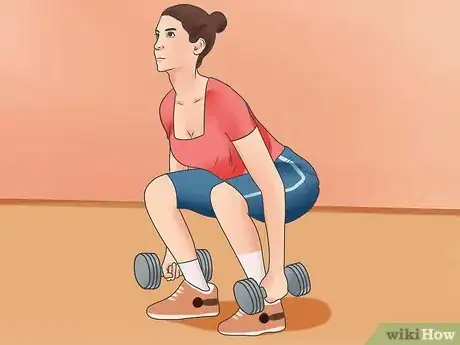


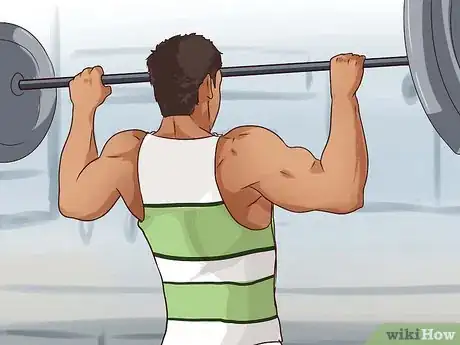




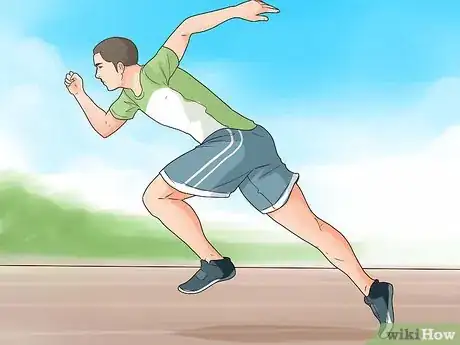




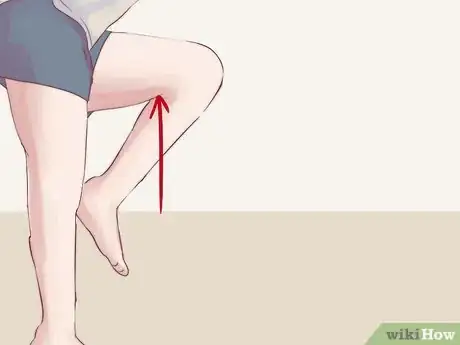
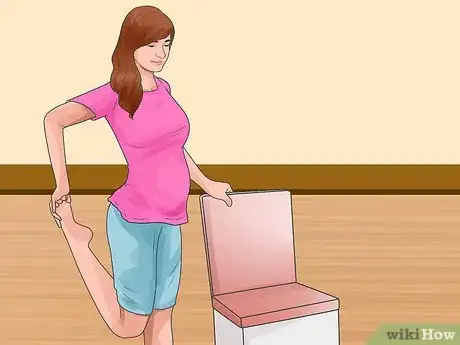



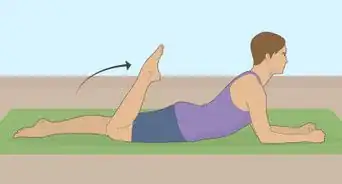
-Step-17-Version-2.webp)
















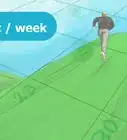


-Step-17-Version-2.webp)



































